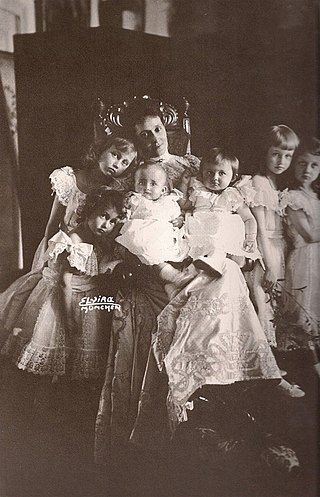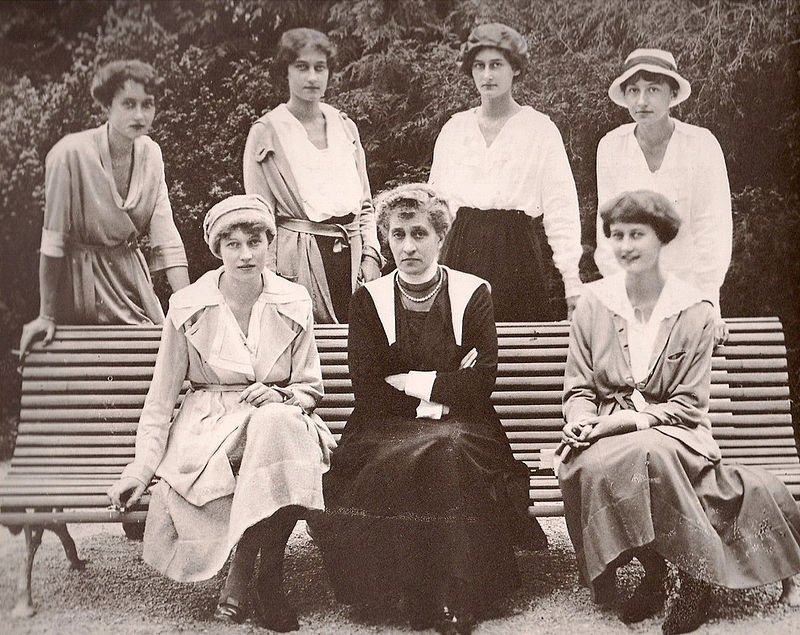by Susan Flantzer © Unofficial Royalty 2015

Guillaume IV, Grand Duke of Luxembourg; Credit – Wikipedia
Guillaume IV, Grand Duke of Luxembourg was born as His Highness The Hereditary Prince of Nassau on April 22, 1852, at Biebrich Palace in Wiesbaden, Duchy of Nassau, now in Hesse, Germany, and was given the name Wilhelm. He was the eldest child and the eldest son of Adolphe, Duke of Nassau (later Grand Duke of Luxembourg) and his second wife Princess Adelheid-Marie of Anhalt-Dessau. Wilhelm had four siblings, but only he and his sister Hilda reached adulthood:
- Prince Friedrich of Nassau (1854 – 1855)
- Princess Marie of Nassau (born and died 1857)
- Prince Franz Joseph of Nassau (1859 – 1875)
- Princess Hilda of Nassau (1864–1952), married Friedrich II, Grand Duke of Baden, no surviving issue
The Duchy of Nassau supported the Austrian Empire in the Austro-Prussian War (1866). After Austria lost the war, the Duchy of Nassau was annexed to Prussia and Wilhelm’s father Adolphe lost his duchy. Adolphe did make an agreement with Prussia for a severance payment and was also able to keep several of his palaces.
In September 1867, Wilhelm entered the Royal Cadet School of Saxony in Dresden. After a stay in Switzerland, he passed the examination required to be an officer in the Austro-Hungarian Army in 1871. In 1888, Wilhelm ended his military career with the rank of Major General.
During its history, Luxembourg has been a part of several different countries. At the Congress of Vienna in 1815, Luxembourg was made a Grand Duchy and united with The Netherlands. In 1839, following the Belgian Revolution, the Treaty of London partitioned territories and created the new Kingdom of Belgium and the new Grand Duchy of Luxembourg. The Grand Duchy of Luxembourg was still united with the Netherlands and King Willem I of the Netherlands was still the Grand Duke of Luxembourg. This rule continued until the death of King Willem III of the Netherlands in 1890. His successor was his daughter Wilhelmina, who could not inherit the throne of the Grand Duchy of Luxembourg due to the Salic Law which prevented female succession. Through the Nassau Family Pact, Wilhelm’s father Adolph became the Grand Duke of Luxembourg and Wilhelm became His Royal Highness The Hereditary Grand Duke of Luxembourg on November 23, 1890.

Wilhelm on the right with his father; Credit – Wikipedia
In 1884, Wilhelm had fallen in love with Infanta Maria Ana of Portugal, daughter of former King Miguel I of Portugal and Adelaide of Löwenstein-Wertheim-Rosenberg. Maria Ana grew up mostly in Austria and Germany due to her father’s exile from Portugal. Wilhelm’s father had opposed the marriage because his family was Lutheran and the Infanta’s family was Roman Catholic. In 1890, when Wilhelm’s father Adolphe became the Grand Duke of Luxembourg, he became the sovereign of a Catholic country and he revised his opinion and gave his permission in 1893.
Wilhelm and Maria Ana were married on June 21, 1893, in Schloss Fischhorn in Zell am See, Austria. On July 22, 1893, the young couple arrived in Luxembourg. They chose Berg Castle as their residence and it is there that five of their six children, all princesses brought up as Catholics, were born:
- Marie-Adélaïde, Grand Duchess of Luxembourg (1894 – 1924), unmarried
- Charlotte, Grand Duchess of Luxembourg (1896 – 1985), married her first cousin Prince Felix of Bourbon-Parma, a son of Maria Ana’s younger sister, had six children
- Princess Hilda (1897 – 1979), married Adolf, 10th Prince of Schwarzenberg, no issue
- Princess Antonia (1899 – 1954), second wife of Crown Prince Rupprecht of Bavaria, had six children
- Princess Elisabeth (1901 – 1950), married Prince Ludwig Philipp of Thurn and Taxis, had two children
- Princess Sophie (1902 – 1941), married Prince Ernst Heinrich of Saxony, had three children

Maria Ana with her six daughters; Photo Credit – Wikipedia
On April 4, 1902, Grand Duke Adolphe appointed his son Lieutenant-Representative and Wilhelm took over some duties for his father. Adolphe died on November 22, 1905, and his son succeeded him. Usually, Wilhelm is styled using the French for Wilhelm, Guillaume IV, Grand Duke of Luxembourg. At that time, the succession in Luxembourg was Salic, meaning a woman could not become the sovereign, and the new Grand Duke only had daughters. When it became clear that Maria Ana would not have further children, Wilhelm named his would-be successors the Counts of Merenburg (products of a morganatic marriage) to be ineligible for the throne. His eldest daughter Marie-Adélaïde became her father’s heir.
In 1898, Wilhelm suffered a minor stroke and by 1906, his health was deteriorating. On March 19, 1908, Wilhelm informed the government that his condition was deteriorating and he appointed his wife, Grand Duchess Maria Ana, his Lieutenant Representative. Eight months later, Wilhelm’s health did not allow him to continue to participate in any duties. On the proposal of the State Council, the Chamber of Deputies named Grand Duchess Maria Anna Regent. On September 15, 1911, Wilhelm returned to Berg Castle, whose renovations had just been completed. There Guillaume IV, Grand Duke of Luxembourg died on February 25, 1912, at the age of 59. He was buried at the burial chapel (link in German) at Schloss Weilburg, the former residence of the House of Nassau and Dukes of Nassau-Weilburg, in Weilburg, Germany.

Schloss Weilburg, burial place of Guillaume IV, Grand Duke of Luxembourg; Photo Credit – Wikipedia, photo by Oliver Abels
His successor Grand Duchess Marie-Adélaïde was 17 at the time of her father’s death, so her mother Grand Duchess Maria Ana remained Regent until she reached her 18th birthday. Marie-Adélaïde abdicated in 1919 in favor of her sister Charlotte, from whom the current Luxembourg grand ducal family descends.

Maria Ana and her daughters in 1920; Photo Credit – Wikipedia
Grand Duchess Maria Ana survived her husband for 30 years. After fleeing Luxembourg when the German Army invaded during World War II, Maria Ana went to live in New York City where she died in 1942 at the age of 81. She was temporarily interred at Calvary Cemetery in Queens in New York City. Her remains were later repatriated and buried at the Cathedral of Notre Dame in Luxembourg City, Luxembourg.
This article is the intellectual property of Unofficial Royalty and is NOT TO BE COPIED, EDITED, OR POSTED IN ANY FORM ON ANOTHER WEBSITE under any circumstances. It is permissible to use a link that directs to Unofficial Royalty.
Grand Duchy of Luxembourg Resources at Unofficial Royalty
- Grand Duchy of Luxembourg Index
- Line of Succession to the Throne of Luxembourg
- Luxembourg FAQs
- Luxembourg Orders and Honours
- Luxembourg Royal Burial Sites
- Luxembourg Royal Christenings
- Luxembourg Royal Dates
- Luxembourg Royal Residences
- Luxembourg Royal Weddings
- Profiles of the Grand Ducal Family of Luxembourg
- Rulers of Luxembourg
